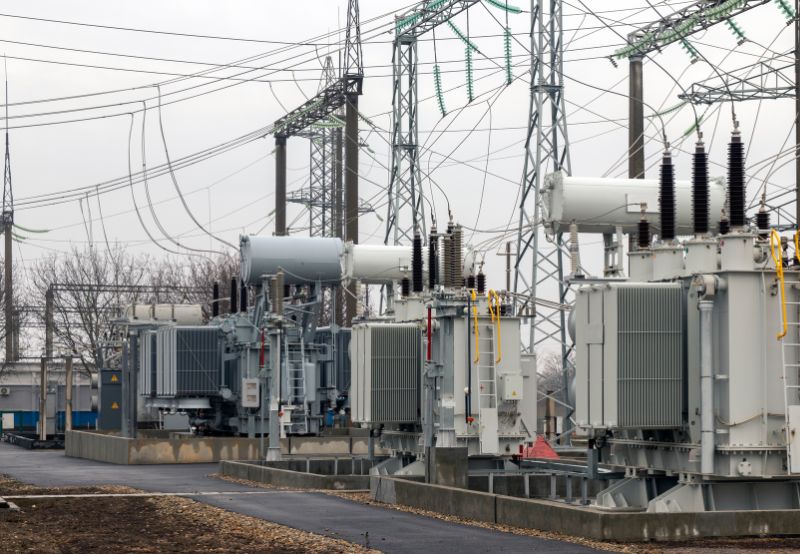The latest Central Electricity Regulatory Commission (CERC) clearance to form security interest for the Rajasthan power project of Fatehgarh IV Transmission is an important step in regional power infrastructure development. It is not a step, but a leap to fund and implement the project. The project is aimed at boosting the capacity and reliability of power transmission in Rajasthan and will now become a reality thanks to this landmark approval. Fatehgarh IV Transmission project is one of several efforts at large to enhance power transmission infrastructure in India, including states such as Rajasthan which have been struggling to meet growing electricity needs.
Importance Of This Step
Grant of approval for security interest creation is an important aspect in the project cycle life since it enables project developers to obtain money needed for the project from financial institutions. Security interest here means the legal right given to a lender on the assets of the borrower as collateral for lending. This structure gives lenders some confidence that their investment will be backed, and hence they are motivated to lend to the project. For the Fatehgarh IV Transmission project, developers can now proceed and make arrangements for funds to build and manage the transmission lines and the related infrastructure.
Fatehgarh IV Transmission is being developed under the Build-Own-Operate-Transfer (BOOT) model, a standard model followed for infrastructure development in India. Under the BOOT model, the construction of projects, operation, and maintenance are performed by the private developer for a specified period and then the asset is handed over to the government or the involved authority. It is a widely applied model in the power sector as it employs private sector finance and expertise with the guarantee that the infrastructure falls into public ownership.
Objectives to be served
One of the key objectives of the Fatehgarh IV Transmission project is to address the transmission bottlenecks hindering the efficient distribution of power in Rajasthan. The state has seen a significant increase in power generation capacity in recent years, particularly from renewable energy sources such as solar and wind. However, the existing transmission infrastructure has not kept pace with this growth, leading to congestion and inefficiencies in the power grid. The new transmission lines being developed under the Fatehgarh IV project are expected to alleviate these issues by providing additional capacity and improving the overall reliability of the grid.
The project will also assist in facilitating the integration of renewable power into the grid. Rajasthan is among the top states of India in the field of renewable energy capacity, having vast potential for solar and wind power generation. Yet, the volatility of these sources of energy is a problem regarding grid stability. A strong grid network is required in order to deliver the generated power where it needs to go. Fatehgarh IV Transmission is suggested for solving such issues by giving the required infrastructure in order to permit the mass penetration of renewable power into the grid.
In addition to enhancing the transmission capacity, the Fatehgarh IV Transmission project is poised to significantly impact Rajasthan’s overall economic development. The reliable and efficient power supply, a critical factor for industrial growth, will be bolstered by the improved transmission infrastructure. This enhancement is expected to attract new investments to the state, creating job opportunities and contributing to the overall socio-economic development of the region. The project also aligns with the Indian government’s broader objectives of promoting sustainable development and reducing the country’s carbon footprint by increasing the share of renewable energy in the power mix.
Challenges Ahead
The grant of permission for the establishment of security interest by CERC is an indication of the desire of the regulator to witness the encouragement of the development of strategic infrastructure projects in the nation. The CERC has been a major contributor to the power sector by ensuring that the regulatory environment is favorable to investment and innovation. The grant of approval to facilitate development of security interest in the Fatehgarh IV Transmission project is a reflection of this pledge. It will serve as a template for replication in creating megaprojects such as the Fatehgarh IV Transmission project, however, is not simple. One of the major challenges is land acquisition to build transmission lines, which may take the form of undergoing complicated legal and regulatory proceedings. The project developers must also ensure that building and operating the transmission lines is done in a sustainable manner in terms of the environment with less disturbance to surrounding communities and the ecosystem. These issues need to be planned and coordinated in an appropriate way by different stakeholders such as the government, regulator organizations, project developers, and financial institutions.
Grant of permission to form security interest is a welcome step for the Fatehgarh IV Transmission project despite these issues. It not only gives the project much-needed finance but also reflects the confidence of the regulatory organizations in the project’s viability. The project will be successfully implemented not only to increase the transmission system of power in Rajasthan but also to help the state as a whole in development and progress, and will also act as a model for all other states of India. In the same way, all the other states also can increase their transmission lines and add more of renewable power to their transmission system, following the success model of the Fatehgarh IV Transmission project.
Conclusion
CERC order granting approval to create security interest for Fatehgarh IV Transmission’s Rajasthan power project is a landmark order putting the contribution of regulatory assistance to the advancement of strategic infrastructure projects in the spotlight. It’s no triviality, but an important landmark charting directions for the use of the project. It is designed to decongest Rajasthan’s transmission constraints, promote the use of renewable energy, and drive economic growth in the state. As India is determined to achieve its energy security and sustainable development ambitions, the Fatehgarh IV Transmission will be one of the key players in determining the fate of the nation’s power sector.

